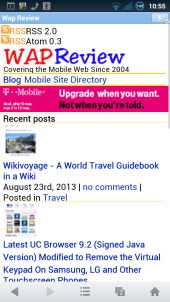
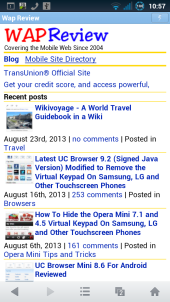
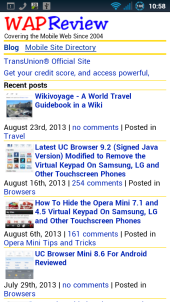
When I reviewed UC Browser Mini 8.6 for Android last month I was pleasantly surprised that it was able to load almost every site I tried. Even more impressive was how well the browser rendered popular sites including Twitter and Google Plus. Mini 8.6 seemed to be much improved compared with previous UC Browser Mini versions that had rather inaccurate rendering and a tendency to throw errors when asked to open a number of pages.
UC Browser Mini is proxy browser like Opera Mini or Nokia Xpress. It users a cloud service to retrieve and render Web pages and compress them before sending them to the thin client browser on the phone. The proxy architecture has the advantage of greatly reducing the amount of data sent over the mobile network. Browsing with UC Browser Mini typically uses 80% less mobile data than with a conventional direct browser like the Android Browser.
UC Browser Mini is actually a dual mode browser. It has proxy mode (called Speed Mode) and a direct mode that bypasses the proxy and uses the Android Webkit browser engine directly access the web. Users can switch between Speed and Direct mode using a button in the left corner of the browser’s header.
I think I’ve discovered the secret to UC Mini’s new found site compatibility and rendering accuracy and it’s rather sneaky. On popular sites that the proxy can’t handle well or at all the browser silently switches to its non-proxy Webkit based direct mode even though the user has selected “Speed” (proxy) mode.
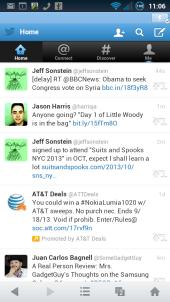
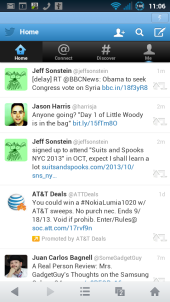
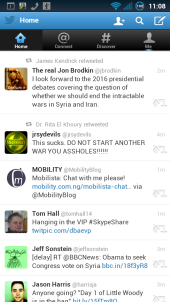
The screenshots demonstrate what I think is happening. At the top are images showing the WapReview mobile homepage in (left to right) UC Mini’s Speed (proxy) and direct modes and in the Android Gingerbread browser. UC Mini does use its proxy on WapReview, as evidenced by rendering differences (like the non-floated images) in the screenshot compared with the other two. The images directly above and below show Twitter.com and plus.google.com in the same order. As you can see, UC Mini’s rendering of Twitter and Google+ in its alleged proxy mode is identical to its direct mode and to that of the Android browser.
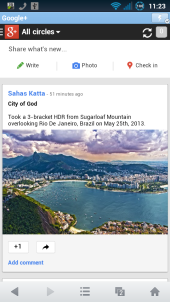
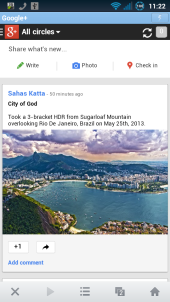
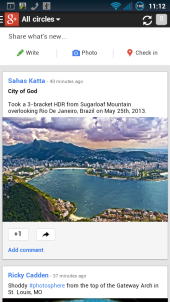
As further evidence of what’s happening, here’s a table comparing the data consumed while loading the three sites in both UC Browser modes and in the Android browser. The browser’s cache was cleared between each test and I used the 3G Watchdog Android app was used to measure data consumption.
| Site | UC Mini Proxy | UC Mini Direct | Android Browser |
| WapReview | 40 KB | 150 KB | 140 KB |
| 710 KB | 720 KB | 690 KB | |
| Google+ | 1250 KB | 1270 KB | 1210 KB |
It seems obvious that even though I’ve selected proxy mode, UC Mini is using direct mode when visiting Twitter or Google Plus. This trick makes the browser seem better than it really is but it also misleads the user into thinking they are using less data than they are.
Last week UC released UC Browser Mini 8.7. It’s a minor update to 8.6 that according to UC includes speed and stability enhancements, a smaller file size and support for the Russian, Spanish and Portuguese languages. I’ve confirmed that 8.7, like 8.6, bypasses the proxy in proxy mode on Twitter, Google+ and probably other sites.
shame on this